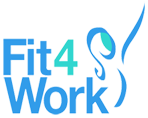The Risks Associated With Manual Handling
Working within the healthcare field poses just as much risk to health and safety as some construction work, according to some industry findings. The main cause of injury comes with moving patients around a ward, between the bed and a wheelchair and other situations where lifting part of their body weight is required. Let’s look at a couple of controversial manual handling techniques first, and consider how healthcare operations can help their medical staff avoid the risks of manual handling, future injuries, expensive workforce injury claims.

Two-person Australian Lift
The Australian lift, as it’s become known over the years, required two staff members to perform it. The technique was commonly used on patients who needed help sitting up in their beds. However, it’s not entirely safe for either the lifters or the patient.
The idea behind this lifting technique was to balance the patient’s weight between two other people. The weight of the patient needed to be balanced between the two handlers, avoiding their weight from becoming too much for one person to carry. This patient moving and handling technique was considered most useful for larger or heavier patients who would be too much to handle for one person.
Heavier patients should be lifted using a hoist, sliding aid, an electric profile bed, or any other form of specialised equipment. Care workers should not put themselves or their patient at risk, and that’s just what the two-person Australian lift does.
Single-Person Bear Hug Lift
The bear hug lift or “hug” was originally suggested as a way for one person to assist a patient in moving from point A to point B. Lifting using the bear hug is often out of a wheelchair or a fixed chair over to a secondary position.
The hug involves leaning forward, squatting down marginally, reaching forward around and under the arms of the patient and lifting them up and out of the chair. Typically, the correct position is assumed with a cognisant patient being explained the technique and what they need to do. A kind of rocking position is then created to get the joints and limbs working before actually performing the bear hug lift.
Again, this is a dangerous type of lift. It is not uncommon for patients to not fully grasp what they need to do in order to be lifted safely. It also puts unnecessary strain on the care giver, when specialised equipment could be used to perform the same job.
Training Medical Staff to Lift Correctly
Healthcare professionals are often required to lift a patient but haven’t necessarily been properly trained how to safely do so. It is vital that they are trained to do so, and understand which type of lift to perform based on the patient’s needs. Things to take into consideration include the patient’s weight, how the patient can assist and the form of transportation. Healthcare professionals also need to be aware of their own limitations to avoid unnecessarily injuring themselves.
Putting relevant staff through a high-quality training course to learn correct manual handling techniques for patient moving and handling enhances patient care. It also reduces instances of injury to staff, injury claims and the need for short-term staff placements to cover for staff recuperation time.
Fit4Work’s Moving and Handling training course is a good training program to consider. This course is designed to teach professionals how to move patients/service users correctly, legally and safely using a variety of techniques.
Given the fact that up to half of patient-facing healthcare staff sustain an injury when handling and moving patients; it’s critical that healthcare facilities provide sufficient training so every member of staff can make appropriate choices about when and how to safely move patients.

